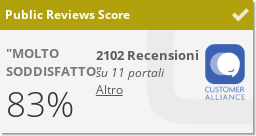Torrente Fersina
In the wild kingdom of the marble trout
A left-hand tributary of the Adige, the Fersina has its source at Lake Erdemolo on the western edge of the Lagorai chain, flows through the Valle dei Mocheni, laps the Valsugana and, after a deep and spectacular gorge, crosses the city of Trento and flows into the Adige. The section under concession to the APDT runs from Cantanghel, at the beginning of Valsugana, to the mouth. It is approximately 7 km long and has an average width of 6 m.
It develops with a gradient of 38 m/km at an average altitude of 290 m a.s.l. (from 390 m a.s.l. at Cantanghel to 190 m a.s.l. at the mouth).
Access routes
To access the city section, from the Trento centro motorway exit, cross the city following the Vicenza direction. Once you reach the torrent at the Cavalleggeri d’Alessandria bridge, you can access it along the paths that run along the banks both upstream and downstream. It is advisable to equip oneself with a rope to descend and ascend the steep embankments more easily. For the stretch further upstream, from the Trento centro motorway exit, take the ring road and the SS della Valsugana in the direction of Padua. Turn left at the Cognola junction and proceed immediately right for S. Donà. At the exit of the S. Donà suburb, turn left and follow the old route of the Valsugana state road until you reach Ponte Alto. From there you descend to the river along a mule track and fish your way up to the boundary of the concession.
Fishing environment
The Fersina has an average flow rate of about 2 mc/s. The stream can be divided into two sections: the section that crosses the eastern part of the city of Trento, characterised by a riverbed with high artificial banks and medium-height weirs, but with natural gravel and pebble beds; the section further upstream, which runs through a deep gorge and is characterised by abundant riparian vegetation. Only fly-fishing, dry or submerged, is permitted in the urban stretch, and the catching of salmonids is limited to a single specimen of at least 40 cm. Numerous brown trout and a few nice specimens of murmorata trout are present. The stretch further upstream has rather deep holes, so it is a more suitable habitat for marble trout, but there are also brown trout and dog barbel. All fishing techniques are permitted here. Passing and spinning techniques are excellent.
Special Rules
| Zone I | Zone “NO KILL” IK | ||
| Aperture | 1 Sun. March | Aperture | 1 Sun. March |
| Exits sept. | 4 of your choice | Exits sept. | 4 of your choice |
| Minimum trout measures | |||
| Marmorata (max 2 capi) | 35 cm | ||
| Hybrid Marmorata x Fario (max 2 heads) | 30 cm | ||
| Fario | 22 cm | ||
| Iris | 22 cm | ||
| Grayling (max 3 heads) | 35 cm | ||
| Bans
Prohibited the use of any natural bait. It is forbidden to mount anchors. Forbidden to take any fish | |||
| Requirements
Where it is possible to exercise fishing with natural baits, the hook must be deprived of the barb. Fishing in the special scheme area, see table. | Requirements The following artificial baits with a single hook deprived of the pin are allowed: artificial flies (fishing with mousetail, camolera, moschera), rotating or wavy teaspoon, fake fish or rapalà | ||
| Max daily catches | Max catch number Daily | ||
| Salmonids | 4 | prohibited any withdrawal of fish | |
| Lucci | 2 | ||
Closing
| Closing
|
In summary
Fishing period
1st Sunday in March
30th September
Fish present
Marbled trout, Brown trout
Dogfish
Technique
Passed, fly spinning, by touch
Bait
Natural bait, spinner, minnow, nymph, dry, streamer.











